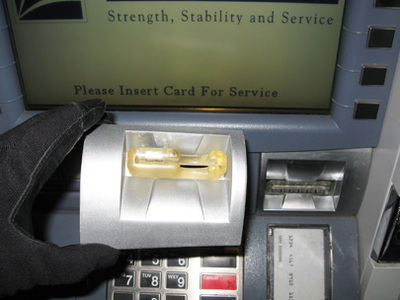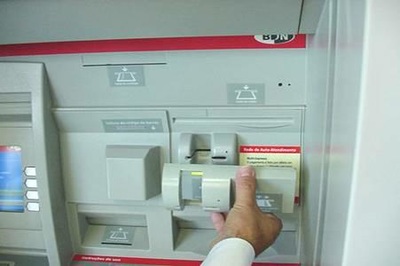A skimmer device fits over the ATM's card reader slot and has its own memory chip to record the information on the card as it is swiped. Skimmers secretly record bank account data when a user inserts an ATM card into the machine. Criminals then can encode the stolen data onto a blank card and use it to access the customer's bank account. Skimmers also come in different colors like the green one used in Des Moines, or in a grayish color that would look similar to an ATM, making it hard to tell it's fake. Original card readers are usually concave in shape (curving inward), while skimmers are more convex (curving outward).
The use of keypad overlays placed directly on top of the factory-installed keypad is a relatively new technique that takes the place of a concealed camera. Instead of visually recording users punching in PINs, circuitry inside the phony keypad stores the actual keystrokes.
- A skimmer is often times no bigger than a deck of cards and blends right in with ATM, looking like a piece of plastic that belongs on the machine. Make sure your ATM doesn't have wires hanging from it, or look like its been tampered with.
- Inspect the ATM or credit card reader DAILY. Be suspicious if you see anything loose, crooked, or damaged, or if you notice scratches or adhesive/tape residue.
- Police say you should make sure the slot to read your card is the same color as the rest of the machine, and look for any nuts or bolts out of place.
- Watch your bank's parking lot for suspicious cars and/or people that look out of place. Often skimmer criminals are hiding out in the lot monitoring the skimmers and customers using the ATM.
- Place cameras that show the outside of your ATMs as customers use them, not just internal ATM cameras.
- Check out all of the various kinds of skimmers being used today to spot fakes on your ATM more readily.
Read more: Device Attached to ATMs Captures Your Card Info









 RSS Feed
RSS Feed